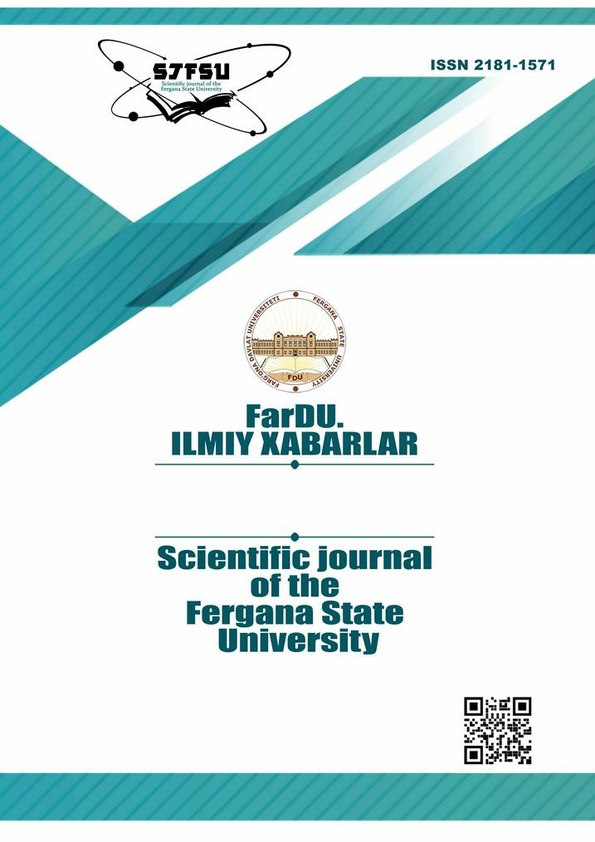SIMILARITY AND DIFFERENCES ASPECTS OF GRADUONIMIC SERIES FORMED BY SEMANTIC CATEGORIES OF VERBS IN UZBEK AND ENGLISH LANGUAGES
Keywords:
graduonymy, gradation series, semantic category, verbs, action verbs, relationship verbs, speech verbs, state verbs, semantic groups.Abstract
This article is presented as an example of research on the study of the graduonymy of verbs in the Uzbek and English languages, and the similar and different aspects of the graduonymy series formed according to the semantic categories of the verbs in the languages being compared. cited. Also, in the article, the semantic categories of verbs of action, verbs of speech, verbs of state, verbs of thought, action verbs of result in Uzbek and verbs of action, verbs of thought, verbs of reason in English Verbs were separated into semantic groups such as verbs, verbs of the state of occurrence, aspect verbs, and the verbs were analyzed from the explanatory dictionaries, and graduonimic lines were created with the participation of their synonyms and opposite meanings. The constructed graduonymic series are interspersed with their equivalents in both languages. As a result of the cross-sectional analysis, it was found that there are similar, different or completely unique gradation lines in the Uzbek and English languages. As a result, when comparing the gradation lines formed from verbs in the Uzbek and English languages, it was found that the number of members in the English language lines is relatively larger. In addition, it was found that in Uzbek language there is a graduonimic rows with the presence of gendered words, such a graduonimic series does not exist in English
References
Djumabaeva J. O‘zbek va ingliz tillarida leksik graduonimiya. Monografiya. – Toshkent: Mumtoz so‘z, 2014. – B.15.
Bozorov O. O‘zbek tilida darajalanish: Filol.fan. d-ri ... diss. – Toshkent, 1997. – B.152.
Jamolxonov H. Hozirgi o‘zbek adabiy tili. – Toshkent: Talqin, 2005. – B.186.
Orifjonova SH. O‘zbek tilida lug‘aviy graduonimiya: Filol. fan. nomz. ... diss. avtoref. – Toshkent, 1996.– B.7-10.
O‘zbek tilining izohli lug‘ati. “YU” harfi. – B. 423. www.ziyouz.com kutubxonasi.
Hojiev A. O‘zbek tili sinonimlarining qisqacha lug‘ati. – Toshkent, 1963. – B.51.
Oxford Dictionary of English and Concise Thesarius
Downloads
Published
Issue
Section
License
Copyright (c) 2023 Scientific journal of the Fergana State University

This work is licensed under a Creative Commons Attribution-NonCommercial-NoDerivatives 4.0 International License.
How to Cite
Most read articles by the same author(s)
- , SIMILARITY AND DIFFERENCES ASPECTS OF GRADUONIMIC SERIES FORMED BY SEMANTIC CATEGORIES OF VERBS IN UZBEK AND ENGLISH LANGUAGES , Scientific journal of the Fergana State University: No. 3 (2023): Scientific journal of the Fergana State University (Social humanities sciences)

